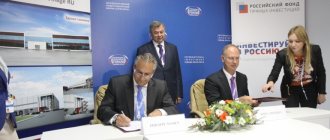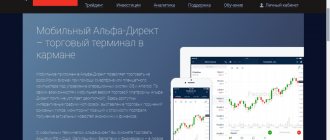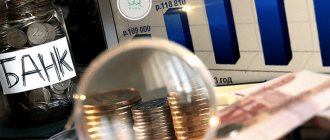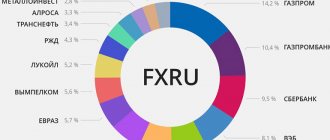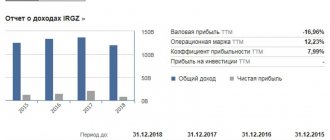As soon as the market economy began to develop, new economic concepts immediately appeared.
We were not familiar with the concept of “investment fund”, maybe only infants. But the rest of the country's population is closely connected by fate with the People's Check Investment Fund. In the nineties of the last century, an unusual economic instrument was used to bring Russia into the market economy. It was necessary during the transition from a planned economy to a market economy and played a large role in investment.
Check investment fund - this is the name given to the regulator of investors' investments, the manager of finances received to make a profit.
- 1 The country's market economy was aimed at creating private property
- 2 Details 2.1 In 1993, the “People's Check Investment Fund” appeared
- 2.2 "People's Check Investment Fund" guaranteed safety
- 2.3 1999 is the year when all check funds were reorganized
Circumstances of occurrence
During the transition from a planned to a market economy, an unusual investment tool arose.
To create private property in the country, the government decided to carry out general privatization. State property was divided into parts in monetary terms. For the entire working population of the country.
Ownership of one such share was secured by a voucher - a government security. Those who worked received the vouchers for free. And they could also be bought. Depends on the object being transferred into ownership.
The check investment fund was created to professionally manage the investments that these vouchers represented.
Contributions from fund participants (investors) form its authorized capital. General funds are invested in turnover to generate income. This is the basis for the existence of an investment fund.
Privatization took place throughout the country. All state property inherited by Russia after the division of the Soviet Union was subject to it.
Privatization gave rise to a huge amount of shady dealings. There was no law regulating the process of transferring state property into private property.
The People's Check Investment Fund organization was founded in 1993. Anyone could join there, as long as they had a voucher in hand.
What's the result?
During the years of privatization, over seven hundred funds were formed, some of which then disappeared. About a hundred organizations were liquidated, but about two hundred continued to operate.
For example, Eurasia is the people's investment check fund. It was created in March 1993 as a privatization fund, which is the holder of citizens' vouchers. In June of the same year, the organization received a license to carry out operations on the stock market, which is associated with the circulation of privatization checks.
The People's Check Investment Fund Eurasia ceased to be such since February 1997 after the approval of the new Charter. It was liquidated in June 2013. You can completely forget about owning shares of the People's Checking Investment Fund.
About the voucher
Sberbank of Russia has issued privatization checks. Non-registered government securities. Their number was precisely calculated. Any citizen was allowed to own them.
- denoted a cost of 10,000 rubles;
- the price of its issue was only 25 rubles;
- the actual purchase price depended on supply and demand;
- purchase/sale was not regulated; no one was interested in the buyer’s age or his activities;
- in exchange for a voucher they gave shares of funds or enterprises;
Having received a pack of vouchers, people felt like millionaires.
None of the ordinary citizens knew how to manage the hypothetical millions.
How can you purchase shares?
In cases where clients wish to purchase shares, then to implement this procedure it will be necessary to carry out a number of specific procedures. First of all, it is necessary to study the activities of the current organization or enterprise. When these points fully satisfy the future shareholder, then an assessment of the number of available securities should be made. Before you can purchase shares in a company, you must enter into an agreement. It states the number and price of shares. After this, it is necessary to put a date and signature of the future owner.
Peculiarities of the check fund's activities
There are two main features of the work:
- Does not form a legal entity.
- The organization's activities include trust management of deposits.
These features were inherent in all check funds that arose after the collapse of the USSR.
A person joined an investment fund. His contributions were transferred to trust management. Thus, he received an investment share, part of the fund’s income. This right was confirmed by shares of the stock organization.
The documents of the People's Investment Fund did not stipulate the obligation to buy back its own shares from investors. This is what all check funds did in Russia in the 90s.
Such organizations were financial pyramids. For shareholders, check funds did not guarantee the safety and return of investments.
Advantages of securities
When comparing investments in a banking structure when purchasing shares, the secondary option will be the most profitable and convenient. Thus, the shareholder will be able to instantly cash out funds from the organization’s own account at the right time, and then sell the shares and receive the due dividend. The interest on deposits here is the lowest for shareholders than the possible profits from invested funds in the corresponding certificates, which can fully confirm participation in the boards.
Start of activity
The creation of check investment funds was regulated only in 1993. The creation of legislation in this area of economic activity began. It was assumed that in conditions of market development, the created funds would invest in industries and economic programs “like in the West.”
The People's Checking Investment Fund was the largest.
The reliable safety of the invested funds was announced. He did not suggest that investors receive stock dividends as a greater return on investment.
Despite the apparent success (income from activities of 50 million rubles, 600 thousand investors), dividends were not paid.
In October 1998, the People's Check Investment Fund was liquidated. Instead, an open joint-stock company “People's Front” arose.
Dividend of 60 rubles
Many families, when sorting through boxes of various documentation, can find yellowed certificates from the nineties in them. These securities were issued instead of a voucher. Most of the then teachers of local schools invested their own personal savings in checking investment funds, for example, the Eurasia organization. One voucher was valued at 10 securities of similar companies. At the same time, citizens were promised significant dividends.
After this, many received cash in the amount of up to 150 rubles. from the capital. As a result, after a certain amount of time, financial flows completely stopped. But what actually happened at that moment? Is it permissible to sell such securities on the market so as not to expect a penny dividend over many years? First of all, you need to find a management company.
It turns out that the Eurasia Fund still carries out its own activities, but today it is an open joint-stock company. Employees rent an office in the center of the capital, not far from the government administration and close to various government departments.
However, in reality, the organization simply does not have any advanced department. Subsequently, it turns out that the organization’s employees do not repurchase shares. Office employees claim that these shares are not accepted on the stock exchange, which means they cannot be sold. However, dividends are still paid. In order to safely receive payment, you will need to fill out the appropriate form, and then receive the due dividends. Today this organization does not own factories and industrial enterprises. For this reason, they are engaged in investing and invest money in shares of domestic organizations.
But if you look at the income of such mutual funds, you can easily understand that, for example, as of the end of 2009, these funds received significant profits. As a result, 4 shares were sold for 260 rubles.
It will also be interesting to read an interesting article about Soviet-era deposits: Soviet bank deposits - how to receive payments and what depositors can expect
Legislative changes
The checking fund documents did not specify how to sell the shares back to the fund. After all, the repurchase of shares was prohibited by law.
In addition, in case of unprofitable activity, the check investment funds themselves did not have the rights to liquidation or reorganization. The law prohibited this for three years from the beginning of the formation of the organization.
The shares did not pay any dividends. The government drew conclusions about the lack of an effective legislative framework in 1996.
Unfortunately, the People's Checking Investment Fund failed. A huge number of investors lost their invested funds.
Since 1999, all check funds have undergone reorganization:
- in OJSC (open joint-stock company);
- in AIF (joint-stock investment fund);
- in a mutual fund (mutual investment fund);
- merger with other organizations;
The funds chose the form of reorganization independently. Of the 700 check funds, only 166 investment organizations have re-registered.
This video is unavailable
Dividend yield is a mixed bag. Dividend payments may be unevenly distributed over time and vary depending on external and internal factors in the company. For example, Megafon announced dividends for the first nine months of 2021 before the end of the year and paid them in January 2021. But dividends for 2014 were paid with an almost one-year delay - in December 2015. Many people were worried then.
You might be interested ==> How much for a third child in Rostov on Don
OJSC MN fund dividends list of shareholders
It is useless to contact these two organizations; they simply do not exist. The check investment fund should not be confused with the Nizhny Novgorod Fair CJSC, which is still operating. These are different organizations that have only the same names.
OJSC CHIF "MN-Fond" was registered with the Moscow Registration Chamber on January 19, 1993. Since December 28, 1994, the name of the fund has been OJSC CHIF Moscow Real Estate, and since March 17, 1997, OJSC CHIF MN-FOND. On December 30, 1998, OJSC “CHIF “MN-FOND” was transformed into an open joint-stock company “MN-FOND” .
Legal address of OJSC "MN-Fond": 109432, Moscow, Nagatinskaya Poyma, Proektiruemy proezd 4062, no. 6. Postal address: 115407, Moscow, p.o. box 109, reference telephone (answering machine 24 hours a day), 621-28 -39 (from 14.00 to 18.00 except Saturday and Sunday). The register of shareholders of OJSC MN-Fond is maintained by OJSC Registrar R.O.S.T.: 107996, Moscow, Stromynka St., 18, building 13, tel. www.rrost.com . Information about the activities of OJSC MN-Fond is brought to the attention of shareholders through publication in the all-Russian newspaper Trud and on the Internet website: www.mnfond.ru.
Trading of the Company's shares takes place in an electronic trading system. Individuals can sell and buy shares using the services of investment companies and banks accredited on the MICEX Stock Exchange.
After the introduction by the President of the Russian Federation in August 1992 of Decree No. 914, which was called: “On the implementation of the system of privatization checks in the Russian Federation tion", all Russian citizens received vouchers or privatization checks.
Investment portfolio of OAO MN-Fond
The open joint-stock company check investment fund “MN-fond” was created at the time of the beginning of privatization in the country. “MNfond” was registered on January 19, 1993 in the form of a check investment fund. Until January 1, 1999, the check investment fund was called OJSC “CHIF MNfond”.
But new research shows that companies that think they have outperformed their peers over time. They are investing in lowering their energy bills to save money, increase workplace diversity, be more innovative, and understand that today's customers are looking for reputable companies.
Is the right investment for your needs? What are the risks and what could they mean for you? If you want to buy and sell shares you own, you can use. Financial Advisor or Investment Manager - You can ask them to buy or sell stocks for you, but they will still go through a stockbroker.
How it all ended
OJSC “People's Fund” issued Certificates of Share Ownership for its investors. And in 2006, a new reform took place: a merger with the joint-stock company Energotransbank.
Obligations to the shareholders of the People's Fund were transferred to the bank. Investors began to wonder how to sell shares.
The bank management provided the opportunity to exchange for bank shares. But we must not forget that the amount in the Certificates of Share Ownership is indicated before the 1998 redenomination. This means that it needs to be reduced by a thousand times.
In 2015, the bank offered to buy back shares of the Popular Front at 108 rubles per share. The purchase was carried out to reduce the number of shareholders without voting rights.
In 2021, when asked how to receive dividends on shares of Popular Front OJSC, the bank simply offered to take part in the shareholders’ meeting.
Investment in our country is developing. More and more people are seeking this new type of economic activity. But first, it is advisable to understand basic economic knowledge and the topic of investing.
How can you collect finance and dividends on shares?
The return of funds from promotions has always been a hot topic for the majority of the country's population. The modern world often offers a variety of stocks and securities. Often, some citizens want to own these important documents for various reasons.
Shares are documents that are necessary to safely prove ownership of shares in certain organizations and enterprises. This allows the owner to take part in various auctions, as well as make any decisions. But the most important thing is that due to the percentage ratios of these securities, you can receive a solid profit to another holder. It should be noted that the total amounts of the organization are divided among all shareholders who own shares. Some of them have the lowest percentages, and some have the highest.
For this reason, benefits are measured at increasing rates. Those shareholders who are leaders of the organization are able to make the main decision in favor of a particular situation. Therefore, as a rule, they have the highest interest rates. In order to successfully increase quantitative indicators, it is necessary to purchase additional securities of the organization.
Checking investment funds
Check investment fund is an investment structure that existed in the 90s. The emergence of a huge number of such organizations was due to the privatization policy in Russia.
Shares of check companies (CHIF) were issued in exchange for privatization checks, also known as vouchers. This now obsolete asset represented a certificate of participation in the enterprise. In many ways, this model was similar to shares, but from a legal point of view, these are completely different things.
A huge number of vouchers were issued by distressed enterprises to their employees, since their financial condition did not allow them to pay off wage arrears in cash. For many people who received such certificates, the popular CIF became the only way to implement them without investing in MMM.
Chubais warned
Meanwhile, it is necessary to look at the message that was indicated in the reminders distributed along with the voucher. And there it was reported that privatization checks are a chance for well-being that every citizen can find. Rubles suffer from the inflationary situation in the country, but real estate will never depreciate in value and will be able to safely generate income for its owner.
Thus, a citizen who acquires such assets is able to expand his own opportunity, and those citizens who sell them are deprived of a long-term perspective. Meanwhile, citizens were fully warned that investing in shares always carries certain risks. At the same time, government authorities cannot provide guarantees that investments in investment funds will not be lost. This means that the citizen himself will bear responsibility for the result of the investment. So who is really to blame for this?
According to experts, Soviet citizens lived according to orders. As the rulers say what to invest in, that’s how they invested. For this reason, subsequently the majority of citizens took their own savings to CHIF and other joint-stock companies. At that time, there was no full-fledged systemic control over financial investment. Today this exists, but at the same time, the population’s trust in the state authorities has been lost, and to fully restore this trust is a rather labor-intensive task.
About auditing, how everything happens, you can read an interesting article: Audit and audit of a company - how to do it according to the rules and procedure
The emergence of CHIF
The emergence of such structures is associated with the decree of President Boris Yeltsin on the creation of its own securities market in the Russian Federation. As part of privatization, enterprises that were previously considered state property now passed into the hands of anyone who wanted it and had the money to implement the plan. The national policy towards the introduction of capitalism contributed to such steps.
Within the framework of the same decree, the first investment structures that worked with the issuance of checks were established. For the new market, the task of the CIF was to create major players in exchange trading. With capital in the form of collected vouchers, they became institutional investors. CIF could also accept cash.
There is a Eurasia share certificate for 30,000 thousand in 1994. What can you do with it?!
2.1. A share is a security that gives the right to receive part of the profit (in the form of a dividend) and participation in the management of the joint-stock company (valid for ordinary shares) through voting at the Meeting of Shareholders - the highest management body of the enterprise. Income from transactions with shares can still be obtained from their resale. This is in theory. What in practice. Some shares were issued and placed in the absence of legislation on the securities market and are not such (for example, securities of MMM JSC). However, if the issuer is included in the Unified State Register of Legal Entities and continues to operate, then logically it is possible to get something from its shares. But here again some tricks have been invented. For example, the company announced a public offer to convert its old securities into new securities within a strictly defined time frame. You didn’t know, you weren’t notified, the deadline passed, your shares became invalid. How much shares of operating companies cost can be found in quotes on the organized securities market - stock exchanges, or on over-the-counter platforms. The remaining securities are of at least some interest to specialized collectors called bonists. Sincerely, Candidate of Pedagogical Sciences, family lawyer Yuris Korolev
Shadow activities
Weak market regulation, as well as citizens' trust in new structures, led to the fact that check companies did not use their capabilities for good purposes. The mechanism of action was as follows: vouchers were collected, at auctions they were exchanged for real registered shares of enterprises, after which the securities were sold several times lower than the market, real value.
As a result, the lion's share of the enterprises' shares fell into the hands of merchants at bargain prices. Using these levers, as well as support from criminal groups, a new cohort of businessmen was formed, who later became Russian oligarchs.
Citizens whose vouchers were on the balance sheet of the managers were often left with nothing, since the funds were liquidated extremely quickly, selling off other people's assets. Between 1995 and 1998, the number of companies decreased by almost half.
I have a EURASIA share certificate ISSUED IN 1993 WHAT IT IS.
7.1. OJSC "EURASIA" People's Check Investment Fund (formerly OJSC "Eurasia")
Office address and legal address: 109074, Moscow, Slavyanskaya Square, 4, building 2, tel., Website https://www.Eurasia.site.ru/
The registrar is ZAO Registronics: 115184, Moscow, Novokuznetskaya str., 23, building 4, tel., 959-27-94, 959-26-94, 959-08-46. Website https://registronics.ru/
8.1. To reliably find out, you need to go to the Federal Tax Service website in the Unified State Register of Legal Entities section, enter the name of the enterprise and receive an extract that will indicate whether it is valid or not, and who is the legal successor. If the issuer no longer exists, then its shares can only be of value to bondholders.
9.1. Dear Natalya There is probably nothing more than to keep as a memory of the 90 years. MMM, Khoper invest idr
Good luck to you and your loved ones!
10.1. CIF "Eurasia" was liquidated. More details >>> Now this certificate can only be sold to collectors.
11.1. You thought you could get something for it, since the fund was specifically created to confiscate vouchers from the population and buy back shares of enterprises, after which the funds were liquidated and the shares were resold to dummies. Contact the stock exchange and they will tell you exactly whether these securities are quoted or not.
11.2. God knows whether you can get something or not. Maybe this organization has not existed for a long time, which is why the certificate has turned into a simple piece of paper. Look for this organization, maybe it still exists.
12.1. Olga You will not receive anything from these certificates. It's time to come to terms with this and not wait for a miracle
I wish you good luck and all the best!
13.1. Currently, the shares of OJSC “NICHF “Eurasia”” are not traded on Russian stock exchanges. Society does not buy them back. The shareholder has the right to sell his shares to any buyer at an agreed price. Dividends have not been paid since 2007.
Major players
Amid the expansion of this industry, some particularly large check investment funds have emerged in large Russian cities:
- Hermes, Sovereign
- MN Foundation, Ural
- Folk, Creation
- Nizhny Novgorod Fair
- Perm, Ark, Republic
- Sakhainvest, JSC, Iset, Zhiguli
- Izumrud, Krasnoyarsk LLD and many others.
Back in 2021, investors’ claims against these enterprises were considered unfounded, since the liquidation took place on legal grounds. Among the reasons for the closure of companies are the negligence of investors, poor management, withdrawal of funds to offshore companies, and strict state taxation, where investors had to pay up to 50 percent of income to the state treasury when selling their checks.
How to receive the money?
If you are the owner of such securities, then you can try to receive funds from them. But the chances of this are slim. Most of the funds were liquidated or transferred to an offshore zone, taking investors’ money with them.
You need to trace the history of the required organization. When a structure closes, its assets are transferred to another company. Most often this is a bank or investment firm. If payments were made during liquidation, then the deadlines were indicated after which payments legally ceased.
Using the Internet, you can find out information and send a request. In large cities - Moscow, St. Petersburg, Yekaterinburg, visit the office of the legal successor of your CHIF. In 1998, in accordance with the law, the remaining private equity funds were transferred to mutual funds (unit investment funds). The interbank conglomerate, which became the manager of these mutual funds, is obliged to pay the funds in accordance with conversion to current exchange rates.
What promotions are there?
There are different varieties of this document. Most often, they are either ordinary or privileged. It is necessary to take into account that the total number of preferred shares cannot exceed the equivalent of 25%. All organizations can safely use both types of shares, or use only one type.
Among these two types of valuable certificates, one should distinguish:
Important: In cases where shareholders own 1% shares, they already have every right to study the full list of owners of other shares. If it is 2%, then you can introduce any issue at general meetings. It is allowed to propose any candidates for management positions. If there is 10%, participants will be able to create appropriate councils in order to take any action or implement a full check.
Having 25% of the shares in hand, the owners will be able to protest any decisions that were previously made. If there are 50% shares and plus 1%, the owner can independently make decisions. At the same time, it is allowed to influence the opinions of other owners. The participant will also be able to attract an additional candidate for the post in cases where old shareholders decide to sell their own shares. If there are 70% shares, this indicates that the current owner is the owner of the organization or enterprise. For this reason, he is able to make decisions independently.
